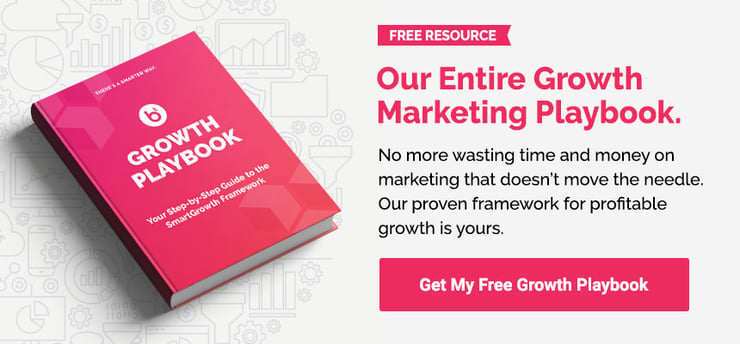Looking to build a new company website? From free platforms to powerful content management systems to custom design and development, there’s more than one way to get it done. But all websites are not created equal.
To be successful, a new company website should be part of a broader business growth plan. Many brands, however, will choose a website designer, developer, agency, or platform based solely on price — and undermine their efforts from the start.
Ultimately, you’ll need to understand what it costs to make the type of website that will create the most impact for your business.
Whether you’re considering a new website from scratch or an existing website redesign, here are three questions to ask before making any decisions:
- What are the different types of websites available?
- How much does each type of website cost?
- How long does it take to make a “good” website?
In this article, you’ll learn the true cost of creating the right kind of website for your business and what to do after launching it.
Instead of wasting time on a pretty design that costs your business money, you’ll end up with a high-performing website that pays for itself and drives revenue growth.
What Are the Different Types of Websites and Their Costs?
Websites can be built using custom HTML code with the help of a developer, but most businesses opt for content management systems (CMS), applications that make it easy to create, edit, and publish online content — with or without a developer.
There are many different content management systems, each with individual costs and benefits to consider.
Free CMS services like WordPress are widespread and popular, as are free/low-cost alternatives like Wix and Squarespace. While budget-friendly, it’s important to consider additional costs and maintenance that often come with these options:
- Hosting – $50 - $1,000+ per month
- Plugins – $287 - $1,330+ per month
- Security – $16 - $40+ per month
- Maintenance – $100 - $4,000 per month
These options are often a good fit for hobbyists and small, local businesses with limited plans for growth.
For roughly the same cost, more ambitious businesses can step up to a fully-integrated content management system (CMS).
With an all-inclusive paid subscription, this software allows a brand to design a website from scratch (or even import an existing website), often with no help from a developer. This not only streamlines site creation and changes, but the best CMS platforms also include:
- Customer Relationship Management (CRM) – Software that collects essential marketing, sales and customer information for easy analysis and data-driven decision making.
- Sales & Marketing Automation – Software tools that automate much of the work for blogging, lead generation, email campaigns, social media and more.
Growth-stage businesses will want to consider building a website with a full-featured CMS that can leverage customer data, website data, marketing data and sales data in one place.
While it’s possible to patch this together with plugins from free CMS programs like WordPress, many websites will still require a developer and the resources to address maintenance issues, security risks, and inaccurate data.
How Long Does a Website Take to Make?
A high-performing, customer-centric website design should take no more than 10-12 weeks to create and launch.
And by "high-performing" I mean it's NOT simply an online brochure. It should be the core of a digital marketing strategy for customer acquisition and revenue growth. The project should include all website copy, design, programming, testing, a blog, and search engine optimization (SEO) with extensive keyword research.
How Long Does SEO Take to Make a Website “Good?”
A website design with an SEO strategy takes the most high-value search terms your audience uses on search engines and places those “keywords” strategically throughout your pages.
The ultimate goal is to rank #1 on those search engines to generate high traffic to your site. After launching a completely new website, it takes about another year for the SEO strategy to kick in and make the website “good.”
If this is a redesign for an old website, the SEO strategy can deliver faster results in months, if not weeks.
What is the Best Website Design?
When analyzing the costs of different websites, think beyond the initial price tag and consider the true scope in terms of additional cost, time, and resources. How much will a particular website solution contribute to your business goals at the end of the day?
A “free” WordPress website may be appealing for cash-strapped startups, but those looking to scale will likely experience growing pains when they realize the true cost and limitations.
Full-featured, paid CMS platforms with CRM, marketing, and sales tools are the right fit for many growing businesses. Brands ready to put those tools to use will find greater value at a similar price point compared to free or low-cost alternatives.
At Brand Theory, we strategically design websites for B2B clients that prioritize the customer experience, leverage the buyer's journey, and highlight your competitive advantage. If you're ready to create a website that can grow with your brand and is poised to act as a key conversion tool in your sales and marketing toolkit, we'd love to chat. Book a no-obligation introduction to Brand Theory today.
